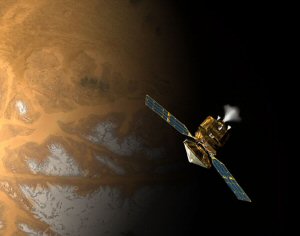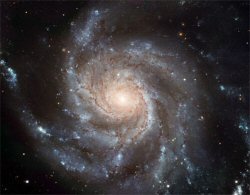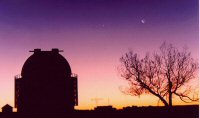|
SpaceTides
e-zine
#39- 7 March 2006
Internet
Newsletter of ASSA Bloemfontein Centre,
South Africa, to the public
www.assabfn.co.za/spacetides
| In this issue of SpaceTides |
INDEX
1. Spaceflight news from around the world
2. Astronomy news from around the world
3. Interesting space facts
4. Space questions
5. Sky Observation log
6. Amateur Astronomer's Corner
7. Astronomy & Science in Southern Africa
8. Astronomy events in the City of Bloemfontein (Boyden open evening
11 March 2006)
9. Web links
10. Advertensies (Sterrekunde kursus in Bloemfontein)
SpaceTides
subscribers,
It's good to be back in SA
- pure blue skies, healthy food and of course the southern skies!
The visit to America was a great experience and broadened my perspective
threefold.
SpaceTides is now known as an "e-Zine" (to at least make it sound
more official!) An e-Zine is basically a website or e-mail in the
form of a magazine.
Bloemfonteiners and people in the vicinity must remember the Boyden
Open Evening of 11 March 2006. See section 8 below. The evening
will go ahead even if there are clouds.
Gerrit
Penning
Editor
Total subscribers as at 7 March 2006: 407 (+13 from
previous issue #38) |
| 1. Spaceflight news from around
the world |

Artist rendition of the MRO orbital insertion.
Image: NASA/JPL-Caltech.
|
Critical step for Mars Reconnaissance Orbiter (MRO)
The
red planet Mars, named after the Roman god of war, is not known
for its compassion for little Earthling satellites: almost two-thirds
of spacecraft sent there never made it... On 10 March 2006,
another make-or-break event takes place when the important MRO arrives
on Mars's doorstep.
The Mars Reconnaissance Orbiter is one of the most sophisticated
orbiters ever sent to another planet. Engineers at JPL have practiced
hard on simulated orbital insertions to make sure they are prepared.
A planetary "orbital insertion" maneuver is
the critical phase where a satellite is captured into an orbit around
a planet. The MRO will fire its onboard rockets to slow its speed
relative to Mars, and will be captured into a long looping orbit.
As the orbiter approaches Mars, it will pass the planet at an altitude
of about 300 kilometers, traveling at just over 10 000 kilometers
per hour!
More information at: http://marsprogram.jpl.nasa.gov/mro/mission/tl_moi.html
Article: http://marsprogram.jpl.nasa.gov/mro/spotlight/20060302.html
|
|
The
ISS on 6 August 2005, photo from the Shuttle after undocking. Credit:
NASA
|
Heads of Agency review International Space Station cooperation
From an ESA article www.esa.int/esaCP/SEMHCVMVGJE_index_0.html
- 2 March 2006
The heads of various countries
met at the Kennedy Space Center, Florida (USA), on 2 March 2006, "to
review International Space Station (ISS) cooperation and endorse a
revision to the ISS configuration and assembly sequence."
The ISS construction suffered serious delays when Shuttle Columbia
was destroyed in 2003.
"The
partners reaffirmed their agencies’ commitment to meet their
mutual obligations, to implement six person crew operations in 2009,
and an adequate number of Shuttle flights to complete the assembly
of ISS by the end of the decade."
General ESA photo gallery: http://www.esa.int/esa-mmg/mmghome.pl
|
| 2. Astronomy news from around the
world |

The
Pinwheel Galaxy photographed by the Hubble Space Telescope. Credit:
ESA/NASA
|
Exquisite
photo of the Pinwheel Galaxy by the HST
Extracts from Hubble ESA news release, 28
Feb 2006 http://hubble.esa.int/science-e/www/object/index.cfm?fobjectid=38852
The
image is the largest and most detailed photo of a spiral galaxy beyond the
Milky Way that has ever been publicly released from Hubble, according to a recent Hubble ESA
news release.
The
image is composed from 51 individual Hubble exposures, in addition
to photos from ground-based telescopes. The final image measures 16
000 by 12 000 pixels!
"The giant spiral disk of stars, dust and gas is 170 000 light-years
across or nearly twice the diameter of our Milky Way. The galaxy is
estimated to contain at least one trillion stars. Approximately 100
billion of these stars alone might be like our Sun in terms of temperature
and lifetime. Hubble’s high resolution reveals millions of the
galaxy’s individual stars in this image."
|
| 3. Interesting Space Facts -
Galaxies |

|
Left: example of a "spiral" galaxy
The most familiar kind of galaxy - flat disks with a bright
central bulge from which the arms unwind.
|

|
Left: example of an "elliptical" galaxy
Ellipticals can range from spherical to rugby ball shaped
and have no arms. Usually consists of old stars with little
interstellar matter.
|

|
Left: example of an "irregular" galaxy
These have no particular shape (like the Magellanic Clouds)
and contain mostly young stars. (Information from the 2006 Sky
Guide Africa South) |
- Galaxies are the
"building blocks" of the Universe. They can consist of billions or
even trillions of stars and come in many shapes and sizes. Astronomers
categorize them as mainly spiral, elliptical or irregular. The Milky
Way galaxy, our "home" in the Universe, is a spriral galaxy. There
are numerous galaxies visible even through amateur telescopes.
- Before the 1920's, astronomers believed that particular faint
fuzzy objects they saw through their telescopes were all nebulae (gas
clouds in space), while some were in fact huge galaxies with billions
of stars in them! Edwin Hubble set the records straight with his ground-breaking
work in distance measurement and proofed to the human race that other
galaxies beyond our own do exist.
-
Our
galaxy is part of the Local Group of galaxies. Galaxies tend
to conglomerate together in clusters. The Local Group consists of
our own galaxy (the Milky Way), Andromeda (M31) and several
other smaller galaxies, including the Large and Small Magellenic Clouds
visible from the Earth. More info at: http://www.damtp.cam.ac.uk/user/gr/public/gal_lss.html
|

|
How
long do stars usually live?
Like most things in the Universe, stars
also have only a limited time in existence. How long a star lives
depends on how fast it uses up its nuclear fuel - the gas it consists
of. During nuclear "fusion" in the core of a star, hydrogen
is converted into helium and only a limited amount of hydrogen exists.
Our star (the Sun) has been around for about 5 billion years and will
have enough hydrogen to keep it burning for another 5 billion years.
Heavier stars on the other hand burn their fuel much faster and some
of them might live only a few hundreds of millions of years or even
less.
|

|
Is
time travel possible?
Well,
if you think about, each one of us is constantly travelling into the
future each second! As for time jumps to years ahead or years ago,
that's an open question.
No evidence exists at this stage that time travel is possible, but
surely it cannot be ruled out. You must probably start by asking what
you define as "time"? Is it continuous like a video which can be rewound,
or is it instant points of never-to-be-repeated occurrences? You get
seconds, micro-seconds, nano-seconds, how small can you go? At some
stage time might become a continuum of ever flowing "something". But
this raise the question "what does time flow past?" We use time
to measure "flow", like the flow of ageing. But how can you use
time to measure time!
One thing is sure: no human (or alien) in the future has ever travelled
to our current time in the present, or otherwise they are doing a
very good job of covering up their tracks! And is it possible
to change the present in the past?
Inspired by: http://www.pbs.org/wgbh/nova/time/sagan.html
|
Descriptions
for mid-March 2006 around 20h00 from South Africa.
Planets:
Currently visible (early to mid March 2006) in the evenings is Mars,
just below the star Aldebaran in Taurus (north-west above the northern
horizon). It is almost confusing watching the two, as they are
both shining red at almost equal brightness.
Saturn is also visible, perfect for a telescope if you want
to see its breathtaking rings. Saturn is situated in the constellation
Cancer in the north-east. It is quite close to the beehive open cluster
at the moment - a beautiful sight in dark skies.
Jupiter rises in Libra around 22h00.
Constellations and stars:
Very close to the northern horizon you will find the 6th brightest
star Capella, in the constellation of Auriga (the Charioteer).
Moving "upwards" and east you will find the two brightest stars of
Gemini, Castor & Pollux. The constellation
of Cancer (the crab) is even further east, but contains faint
stars visible in darker skies.
Around your zenith (the point directly above your head), you will
find the faint galaxy of Monoceros - a treasure trove of deep
sky objects for bincolars, but especially for telescopes.
The brightest star Sirius in Canis Major is also near the zenith. Orion is
slowly moving west as the evening progresses, preparing for its autumn
farewell. Late March and April is probably the best months for the
southern skies, as the impressive constellations of Argo Navis,
Crux and Centaurus make their appearance.
Want to know where to start, what to look for and how?
Contact ASSA Bloemfontein through Gerrit at mail@assabfn.co.za and we'll send you information.
Other events:
Full moon on 15 March 2006.
The Moon occults Antares (moves in front of the star)
on 21 March 2006 during the morning hours before sunrise. More
info upon request.
Penumbral eclipse of the Moon on 14/15 March 2006.
|
| 6. Amateur Astronomer's Corner |
Angular
separation: distances in the sky
"Angular seperation" refers
to the distances between objects in the sky. Distance in the night
sky is measured in degrees, minutes and seconds.
For
distances between objects: a degree is divided into 60 arcminutes
(60') and a minute is divided into 60 arcseconds. The Sun and Moon
is half a degree in diameter, or 30 arcminutes wide. The human eye
can only resolve one arcminute, or 60 arcseonds (60"). Jupiter's disk
is about 40 arcseconds (40") in diameter - less than the resolution
power of the human eye - and subsequently we only see it as a point
of light and not a disc such as when using magnification. When using
a 10x50 binocular, Jupiter will be magnified 10 times: it's disc will
appear to be 40"x 10 = 400", or 6.6 arcminutes wide.
For altitude, when using the alt-azimuth method of measurement,
the horizon equals 0 degrees and the point directly above your head
(the zenith) equals 90 degrees. 45 degrees will thus be exactly between
the horizon and the point above your head.
You can easily utilize your stretched-out arm to measure wider distances:
a fist at arms-length will measure 10 degrees wide, a spread-out hand
20 degrees and a thumb 2 degrees.
Adapted from the 2006 ASSA Sky Guide Africa South - http://www.saao.ac.za/assa/html/skyguide2006.html
|
| 7. Astronomy & Science in Southern
Africa |

|
Willie Koorts's
Home Page
Willie is an electronic technician at the SAAO's
Cape Town office and a prolific amateur astronomer in South Africa.
His website is no doubt one of South Africa's most interesting and
comprehensive astronomy-related internet resources and well worth
a visit. Even if you only have a passing interest in astronomy, his
website will make an impression on you.
Includes information on telescope making, astrophotography, satellite
tracking and more.
Link: http://www.saao.ac.za/~wpk/
|
For other SA Astronomy websites, go to
the SpaceTides SA Astronomy Portal at:
www.assabfn.co.za/spacetides/sa_astronomy.htm
| 8. Astronomy Events in the City
of Bloemfontein |
The different astronomy organisations
in the City, working hand-in-hand to inform people
about the interesting world of astronomy and spaceflight,
can be reached at the following contact details:
Boyden Observatory:
www.uovs.ac.za/boyden
One of the most publicly accessible observatories of its kind
in the Southern Hemisphere, also housing SA's third largest telescope.
To arrange group visits to the Observatory, phone Dr. Matie Hoffman
at 051-401 2924 for more information, or send an e-mail to him at:
HoffmaMJ.SCI@mail.uovs.ac.za
Next Boyden Open Evening/Volgende
Boyden Ope-aand: (Bloemfontein, SA) -
Saturdag 11 Maart 2006, 18h30 vir 19h00. Tema van multi-media aanbieding:
"Ons en Ander Sonnestelsels" deur personeellede van die Departement
Fisika, UV. Presentation also in English upon request. Konstellasie
en ster-uitwysing, waarnemings van die maan, planete en dieplugvoorwerpe
deur teleskope. Bespreking noodsaaklik by 051-401 2322. R30 per
voertuig. Verversings sal te koop aangebied word. Die groen Vrystaat
vanaf die dak van die ouditorium is asemrowend!
|
|
A
public interest group for Boyden Observatory and for people interested
in joining the astronomical community of Bloemfontein, but not make astronomy necessarily
their "full-time" hobby.
Contact
Braam van Zyl at 051-436 7555 (h) or visit the website above for
more information regarding the Friends. Anyone can become a member.
R50 membership fee per year for a whole family. Members receive
the latest information on astronomy events in Bloem, attend the
Friends' presentations free of charge and receive the "Naghemel"
quarterly newsletter compiled by ASSA Bloemfontein, by post.
|
Affiliated
with the Astronomical Society of Southern Africa, the Bloemfontein
Centre of ASSA is an active organization of amateur astronomers
meeting on a regular basis to discuss and practice astronomy as
hobby. Activities include solar-, lunar-, deep sky- and comet &
meteor observations, as well as historical research, telescope building,
tours and away-weekends under dark skies. Send an e-mail to mail@assabfn.co.za or visit the website.
Come to the open-evening of 11 March 2006 and talk to some of the
amateurs.
|
Onthou ook om Boyden Sterrewag se gereelde sterrekunde
berigte in die "Ons Stad" plaaslike
koerant te lees. Dit bevat ook meer inligting rondom Boyden besoektye.
- ESA Satellite image archive:
http://earth.esa.int/satelliteimages/africa001.html
(includes photo of Pretoria, SA!)
- European Homepage
for the NASA/ESA Hubble Space Telescope, with images: www.spacetelescope.org
- Russel Croman Astrophotography: http://www.rc-astro.com/
- Kids astronomy - resources for teachers, astronomy for children: http://www.kidsastronomy.com/
- Cambridge Cosmology: http://www.damtp.cam.ac.uk/user/gr/public/cos_home.html
- CPU's used on spacecraft in space: http://www.cpushack.net/space-craft-cpu.html
| 10. Advertensies - Sterrekunde
kursus |
Sterrekunde Kursus in Bloemfontein
'n Sterrekunde kursus wat oor 6 weke strek, word vanaf 13 Maart 2006 in
Bloemfontein aangebied. Die kursus is veral geskik vir persone wat niks of
baie min weet van sterrekunde. Enige persoon in die hoërskool en ouer sal
baat vind by die kursus.
Die kursus kan bygewoon word op Maandae of Donderdae, vanaf 18:00 tot 19:30 by
die Fisika departement op die kampus van die Vrystaat Universiteit. Persone wat
die kursus vinniger wil afhandel, of wat buite Bloemfontein woonagtig is, kan in
slegs twee Saterdae die kursus ook doen. Saterdag 18 Maart se kursus begin om 12:00 by Boyden
Sterrewag.
Kursusfooie beloop R300 per persoon. Besprekings moet gedoen word deur Hannes
Calitz te skakel by (051) 433 3116.
|



